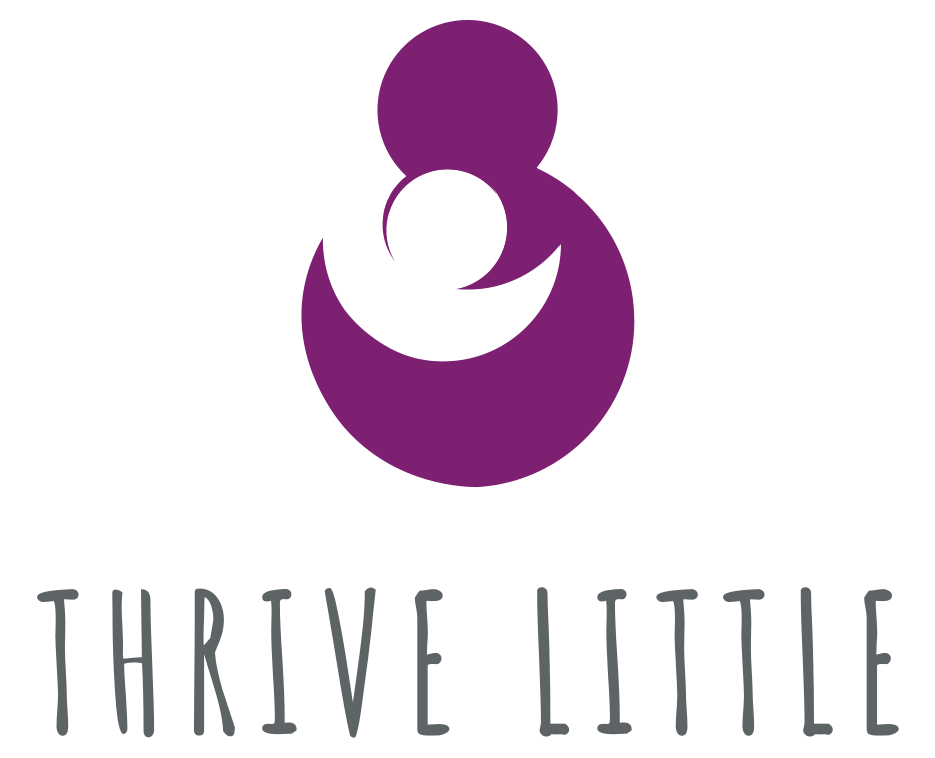Baby-led weaning (BLW) has become a popular approach when starting solid foods. There are many benefits to using a blw approach.
Baby-led weaning can help with fine motor skills, oral motor skills, and reduces picky eating. We will dive more into the benefits, but first, what is baby-led weaning?
What is Baby-Led Weaning?
Baby-led weaning is an approach that focuses on baby feeding themselves finger foods. If you follow this approach strictly, spoons and purees are not recommended.
I don’t think avoiding spoons or purées is necessary or beneficial however. Check out our article that defines baby-led weaning for more information on this topic.
If you prefer to use a combined approach (purees and true solid foods), check out this article.
When to Start Baby-Led Weaning?
- Good head control—Should be able to sit in a high chair and hold their head up
- Opens mouth for food—Show interest in what others are eating
- Can move food from spoon to throat—Keep food in their mouth without significant spillage
- Good growth since birth—Double their birth weight and at least 13lbs
- At least 6 months of age—Only give breast milk or formula the first 6 months

Benefits of Baby-Led Weaning
Baby Can Be Part of Family Meals
If baby is eating what everyone else is eating (with some modifications of course), they can join the rest of the family for meals and this benefits the whole family.
Being part of family meals benefits the baby because they can learn more about the social aspects of mealtime. They can also observe the motor skills their family uses to eat a meal.
When baby eats what the rest of the family eats, this also benefits the parents. Cooking separate meals and having to blend foods into puréed form can be a lot of work. It’s easier to just cook some of the ingredients a bit longer so they’re safe for baby to eat.

Baby-Led Weaning Helps with Fine Motor Skills
When babies are doing the work to feed themselves, they develop their eye hand coordination and the fine movements needed to pick up small objects.
It’s not safe to give babies tiny objects to play with of course, so food is really the only small object you can give babies to help them develop their pincer grasp.
Baby-Led Weaning Helps Advance Oral Motor Skills
Imagine eating a spoonful of yogurt and compare that to eating a raspberry. The coordination and muscle control needed to eat the raspberry is much more complex than the yogurt.
When we eat solid foods, we have to move them to the side of our mouth to chew, move it back to the middle of our tongue, then move it to the back of our mouth to swallow. The younger babies begin working on these skills, the faster they can learn how to safely eat a variety of foods.
Exposes Baby to a Variety of Textures
The texture of puréed foods is very similar all the time. When you offer foods in their original form, baby will be exposed to many different textures.
This helps baby get used to texture variety from the beginning with the first foods they eat. Yes it is likely that baby will gag more at first than they would have with purees. But a baby-led approach helps the gag reflex to integrate faster.
Baby-Led Weaning Reduces Picky Eating
All of the previously mentioned benefits contribute to a reduction in picky eating. If young babies have more advanced oral motor skills, fine motor skills, and are comfortable with different textures, they will likely continue to be more open to variety as they enter toddlerhood.
Toddlers are notoriously picky eaters and even if you use a baby-led approach early on, your child will likely still develop some strong food preferences in the toddler years. This is normal! But toddlers who started with baby-led weaning tend to be less picky than others.
For more strategies to reduce picky eating, we have another article for you.
Are There Reasons to Not Use a BLW approach?
So, is baby-led feeding right for your child? Is there any reason why you should go with a different feeding method in the weaning process?

You Don’t Want to do BLW
Plain and simple- you are the parent and you get to decide what’s right for your child! You know your child best and no one else can tell you the best way to approach infant feeding.
What about Children with Developmental Delays?
I’ll say it again, if you don’t think a baby-led approach is safe for your child, it’s 100% okay to start with puréed foods. If you’re not sure, a feeding evaluation from a qualified specialist such as an OT or SLP may be a good idea.
Differences in oral motor skills, fine motor development, muscle tone, sensory processing, and cognitive abilities all play a part when it comes to infant feeding. If your child has challenges in any or several of these areas, more caution should be taken.
Is There a Higher Choking Risk?
Studies show that there is no increased risk of choking when using a blw approach versus traditional spoon feeding.
It is important to give baby soft foods that you can squish between your fingers to keep them safe and prevent choking.
Other safety tips are to only feed baby when seated in a supportive seat like a high chair, to always stay in the room with eyes on them, and to learn CPR so you know what to do if a choking incident does occur.
Baby-led weaning does have many benefits, but as stated several times above, you get to decide what is best for your family!
This post contains affiliate links
Can You Mix Baby Led Weaning and Spoon Feeding?
- Murkett, Tracey (Author)
- English (Publication Language)
- Malkani MS RDN CDN, Malina (Author)
- English (Publication Language)
- Ward, Simone (Author)
- English (Publication Language)




